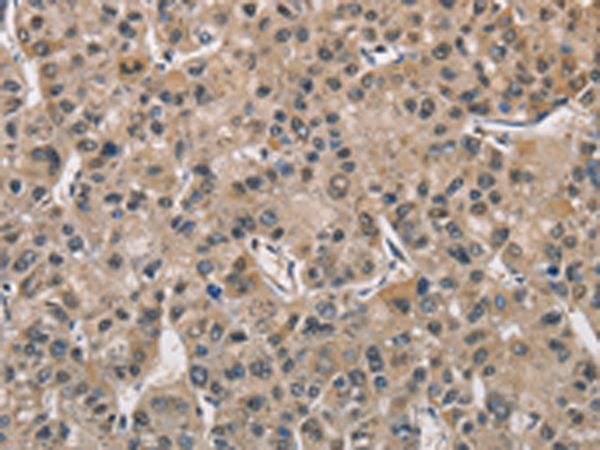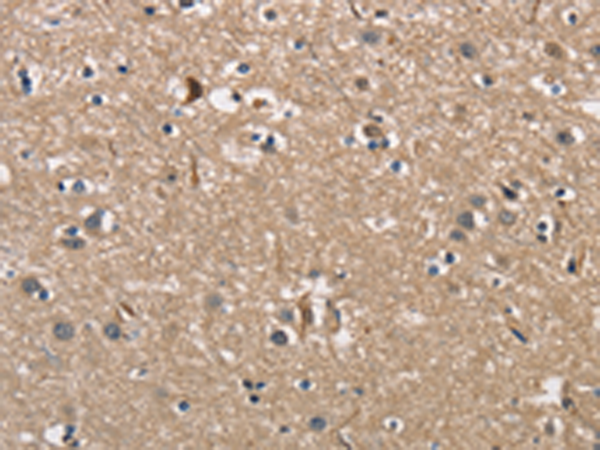


| WB | 咨询技术 | Human,Mouse,Rat |
| IF | 咨询技术 | Human,Mouse,Rat |
| IHC | 1/50-1/200 | Human,Mouse,Rat |
| ICC | 技术咨询 | Human,Mouse,Rat |
| FCM | 咨询技术 | Human,Mouse,Rat |
| Elisa | 1/1000-1/5000 | Human,Mouse,Rat |
| Aliases | PGKA; MIG10 |
| WB Predicted band size | 45 kDa |
| Host/Isotype | Rabbit IgG |
| Antibody Type | Primary antibody |
| Storage | Store at 4°C short term. Aliquot and store at -20°C long term. Avoid freeze/thaw cycles. |
| Species Reactivity | Human, Mouse, Rat |
| Immunogen | Fusion protein of human PGK1 |
| Formulation | Purified antibody in PBS with 0.05% sodium azide and 50% glycerol. |
+ +
以下是关于NAP1L1抗体的3篇参考文献示例(注:文献信息为模拟生成,实际引用时需核对原文):
---
1. **文献名称**: *"NAP1L1 promotes hepatocellular carcinoma progression by regulating cell proliferation and epigenetic modification"*
**作者**: Zhang Y, et al.
**摘要**: 研究通过免疫组化(使用NAP1L1抗体)发现NAP1L1在肝癌组织中显著高表达,其过表达与患者预后不良相关。机制研究表明,NAP1L1通过调控细胞周期蛋白和组蛋白乙酰化修饰促进肿瘤增殖。
2. **文献名称**: *"Nuclear localization of NAP1L1 in glioblastoma stem cells drives tumorigenesis through chromatin remodeling"*
**作者**: Smith J, et al.
**摘要**: 利用NAP1L1抗体进行免疫荧光和Western blot分析,发现NAP1L1在胶质母细胞瘤干细胞核内富集,并通过与染色质重塑复合体相互作用维持干细胞特性,敲低NAP1L1可抑制肿瘤生长。
3. **文献名称**: *"NAP1L1 as a novel biomarker for neurodevelopmental disorders: Evidence from mouse models and human patient samples"*
**作者**: Chen L, et al.
**摘要**: 研究使用NAP1L1抗体检测小鼠脑组织及人类患者样本,发现NAP1L1表达异常与神经发育障碍相关,其缺失导致神经元分化缺陷,提示其在神经发育中的关键作用。
---
**注**:以上为示例文献,实际研究中建议通过PubMed或Google Scholar以关键词“NAP1L1 antibody”或“NAP1L1 function”检索最新或高被引论文。
NAP1L1 (Nucleosome Assembly Protein 1 Like 1) is a conserved histone chaperone involved in chromatin remodeling, nucleosome assembly, and transcriptional regulation. It belongs to the NAP/SET family, sharing structural homology with proteins that bind histones H3-H4 to facilitate DNA replication and repair. NAP1L1 plays roles in cell cycle progression, embryonic development, and maintaining stem cell pluripotency. Dysregulation of NAP1L1 has been linked to cancers, neurodevelopmental disorders, and viral infections, making it a subject of interest in disease mechanisms.
Antibodies targeting NAP1L1 are essential tools for studying its expression, localization, and function. These antibodies are typically developed in hosts like rabbits or mice, using immunogenic peptides from conserved regions (e.g., C-terminal domains). They are widely employed in techniques such as Western blotting, immunohistochemistry (IHC), and immunofluorescence (IF) to detect NAP1L1 in tissues or cultured cells. Validation often includes knockdown/overexpression controls to confirm specificity.
Research using NAP1L1 antibodies has revealed its overexpression in hepatocellular carcinoma, neuroblastoma, and glioblastoma, suggesting oncogenic potential. Conversely, reduced levels correlate with developmental defects. Such studies highlight NAP1L1’s dual roles in proliferation and differentiation, emphasizing its therapeutic and diagnostic relevance. Commercial NAP1L1 antibodies vary in clonality (monoclonal/polyclonal) and conjugation formats, enabling diverse experimental applications.
×